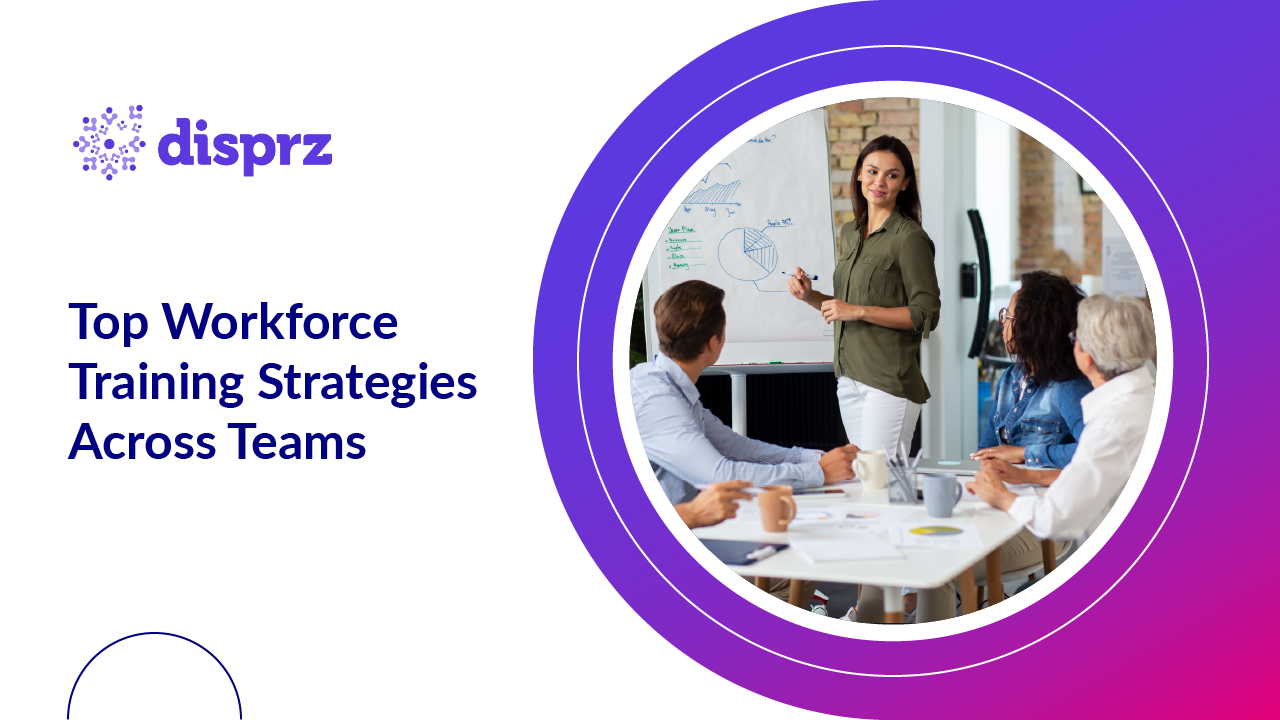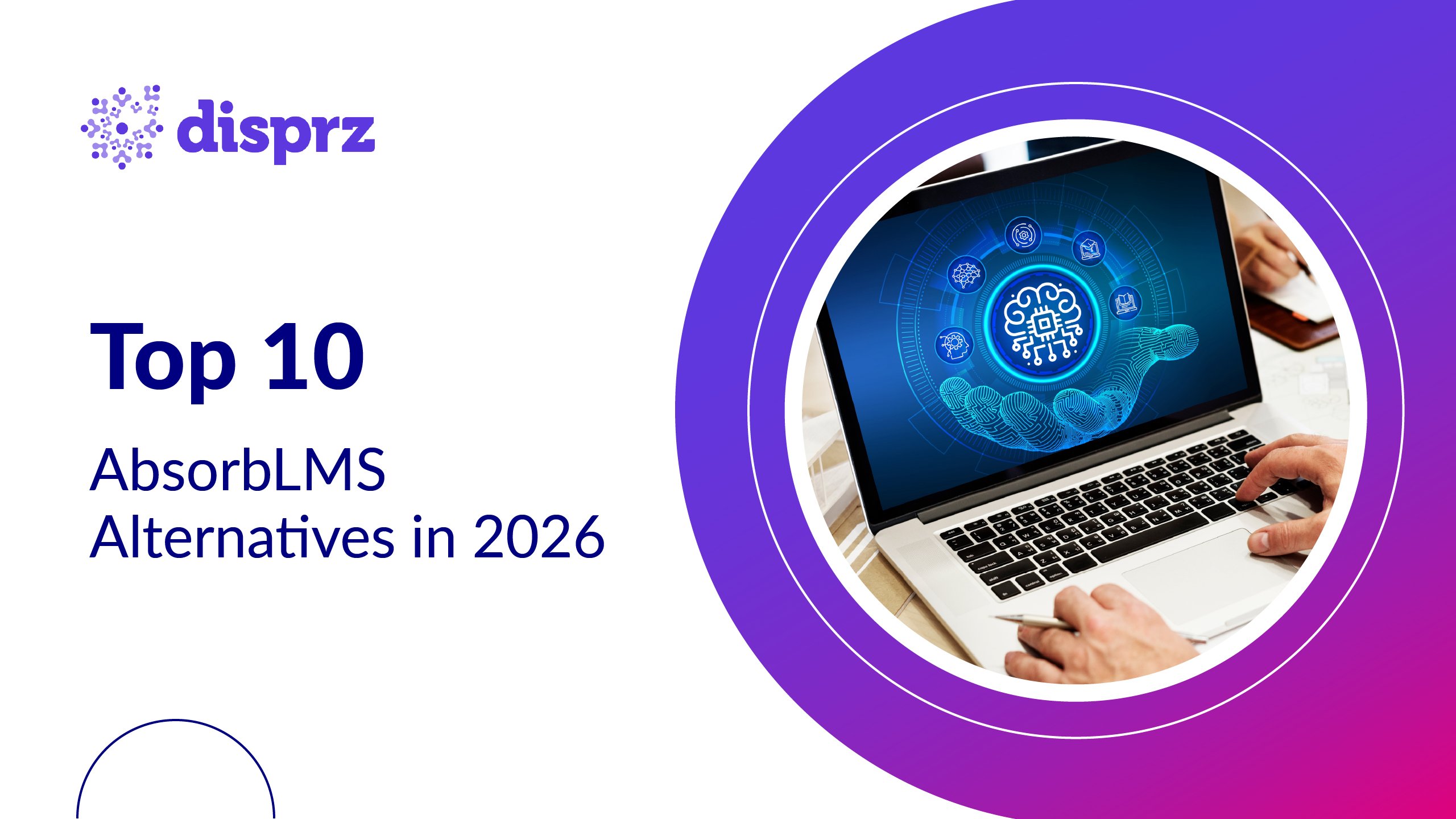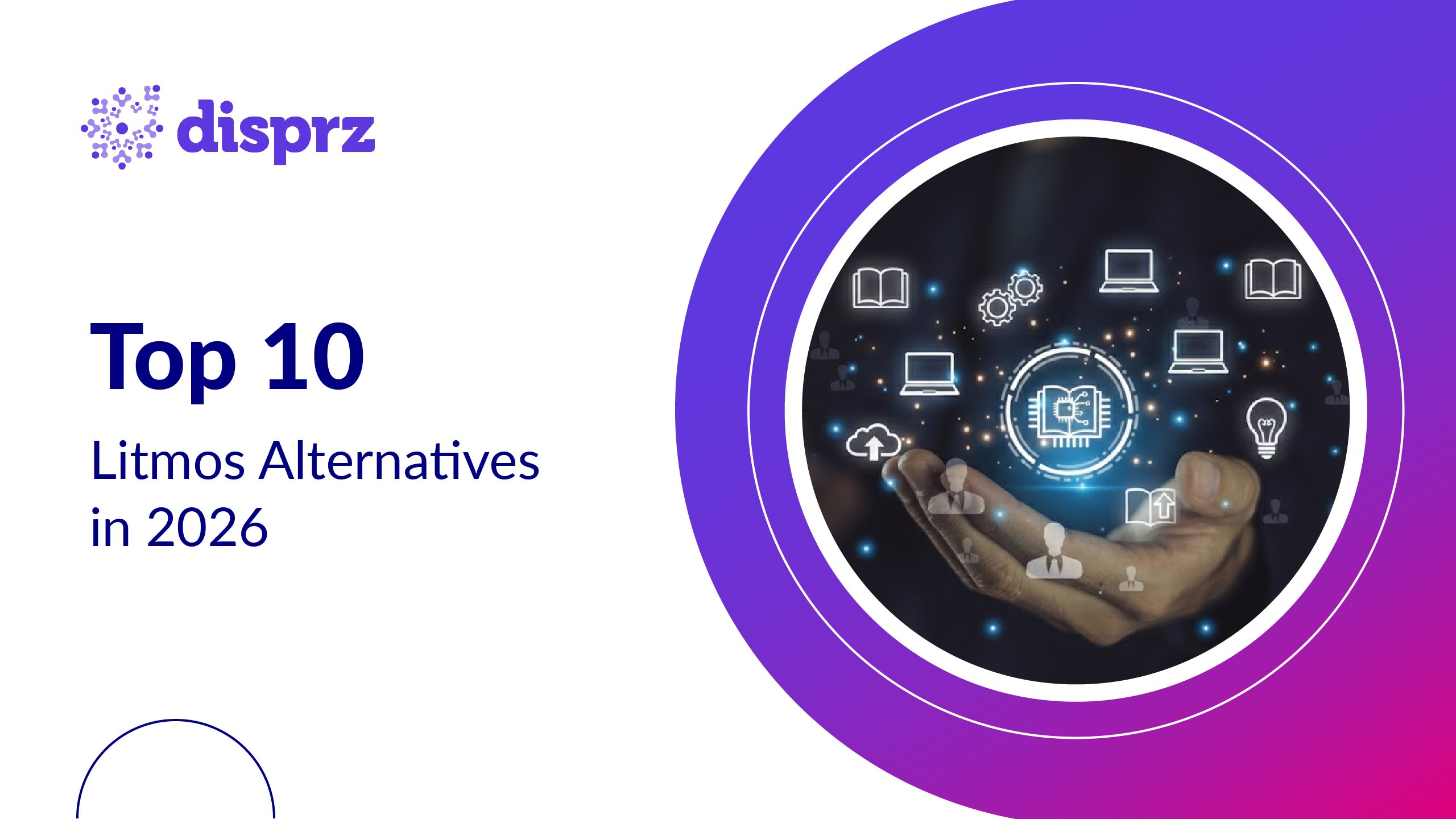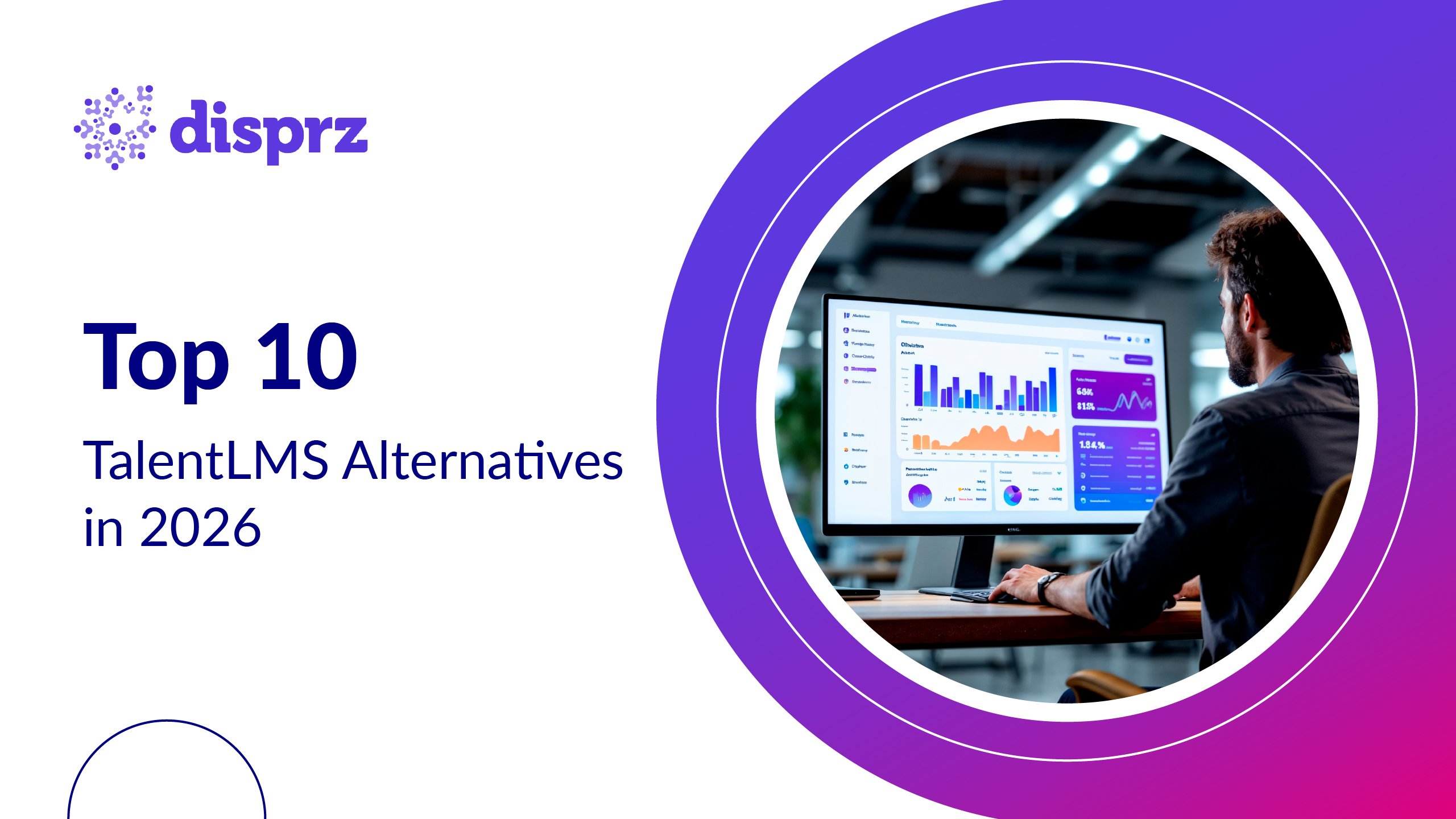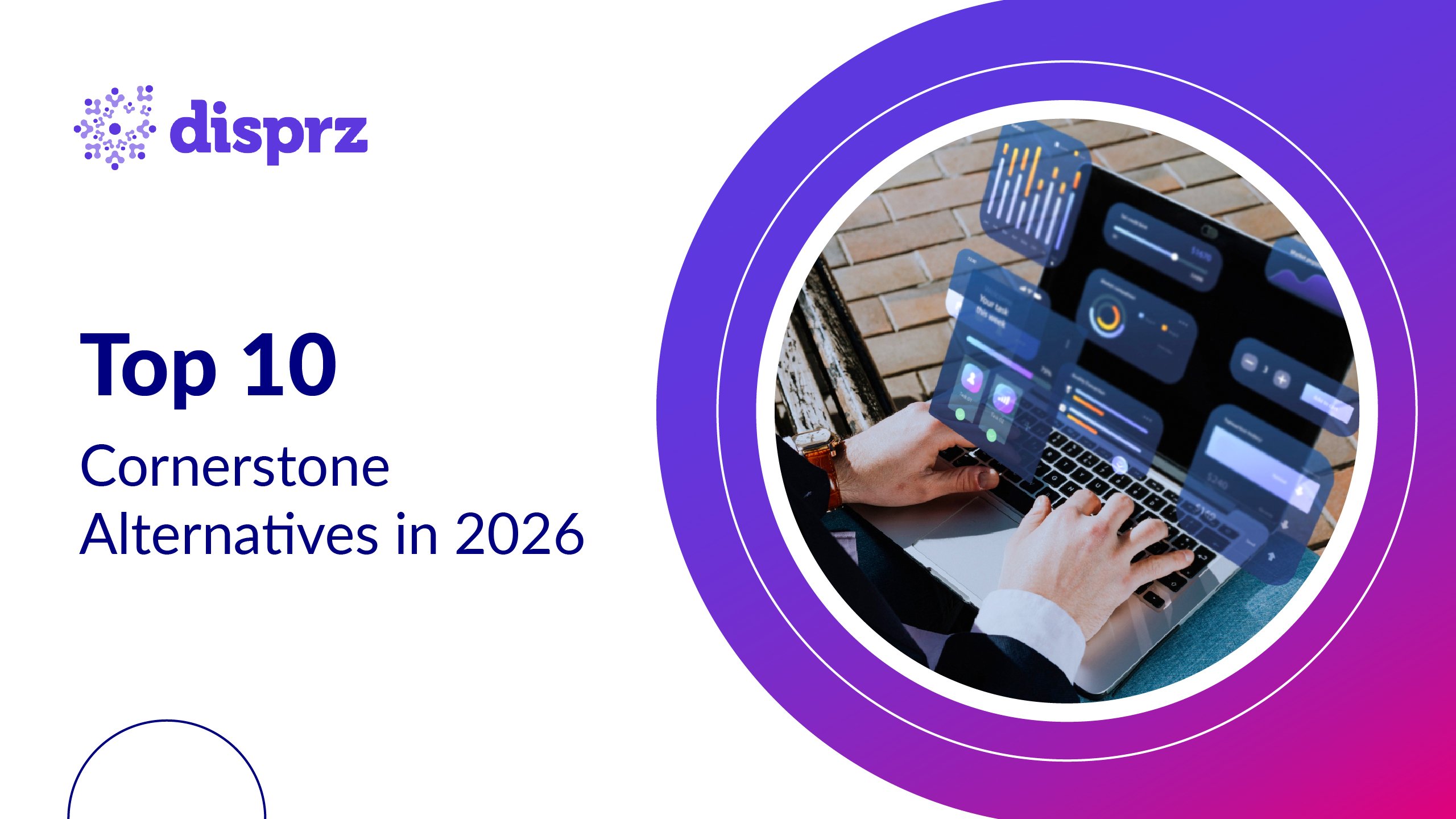In a world of constant change, how well an organization adapts depends entirely on its people and their skills. Yet, nearly half of learning and talent development professionals acknowledge a growing skills crisis. In fact, 49% say their executives worry that employees don’t have the right skills to execute business strategy effectively.
This gap becomes even more challenging when workforce training needs vary across departments. Sales, marketing, customer service, and tech teams all require different learning approaches, making it difficult to scale training effectively. Without a structured yet flexible strategy, organizations risk inconsistent learning, reduced collaboration, and lower productivity.
To stay competitive, organizations must move beyond fragmented training and adopt a scalable, technology-driven approach that ensures every team has access to the right learning opportunities. Let’s understand workforce development best practices, including strategies to break down silos, align learning with business objectives, secure leadership buy-in, and build a dynamic training ecosystem that evolves with organizational needs.
Why Does Training Often Get Stuck in Silos?
One of the biggest obstacles to scaling workforce training is the siloed approach to learning, where each department operates in isolation without any consolidated workforce development programs. The sales team has its own onboarding and product training, marketing follows self-paced courses, tech teams rely on peer-led learning, and customer service depends on real-time coaching. With no unified strategy, knowledge gaps widen, collaboration suffers, and business performance declines.
A major reason for this fragmentation is the traditional treatment of L&D as an HR sub-function responsible for compliance training, leadership development, and occasional skill-building initiatives. But in today’s dynamic business environment, L&D is not just an HR responsibility; it is a business-critical function that must be embedded across departments.
The Impact of Isolated Learning on Collaboration and Performance
Siloed workforce training leads to several critical challenges:
Limited knowledge sharing
When departments train in isolation, employees miss out on cross-functional expertise, reducing innovation and problem-solving capabilities.
Inconsistent skill development
Different teams operate with varying levels of competency, leading to inefficiencies in workflows and decision-making.
Lower adaptability
In a rapidly evolving business landscape, organizations need agility. Siloed training creates rigid structures that prevent employees from acquiring new skills quickly.
How to Create a Cross-Functional Training Ecosystem
To break silos and ensure that training is scalable, business-driven, and impactful, organizations should adopt a cross-functional learning strategy built on these 4 key pillars:
1) Embed Learning Within the Business, Not Just HR
L&D should not be managed in isolation within HR. Instead, it must be embedded into every department, with business leaders, managers, and team leads actively driving training initiatives. This requires departmental stakeholder alignment to ensure learning is integrated into daily operations.
Key actions include:
-
Empowering department heads to co-own learning programs.
-
Encouraging cross-functional mentorship and knowledge-sharing.
-
Aligning L&D with business objectives rather than treating it as a compliance-driven function.
2) Establish a Unified Competency Framework
A scalable training strategy in any workforce development program requires a centralized competency mapping system that defines the skills needed across different job roles and departments.
This ensures:
-
A structured approach to skill-building that aligns with business goals.
-
Standardized learning pathways across departments while allowing flexibility for role-specific training.
-
A clear roadmap for employee growth, making it easier to transition talent across teams when needed.
3) Implement Cross-Departmental Learning Paths
Rather than confining employees to department-specific training, organizations should encourage interdisciplinary learning by:
-
Creating shared learning programs that allow employees to gain skills beyond their core functions.
-
Implementing collaborative learning projects, such as sales and product teams co-learning on customer needs or marketing and data teams upskilling together on analytics.
-
Using AI-powered learning platforms that personalize training while promoting cross-functional skill development.
4) Foster a Culture of Shared Learning
Breaking silos isn’t just about technology and frameworks; it’s about mindset shifts. Organizations must actively promote a culture of knowledge-sharing, where employees feel encouraged to learn from each other, participate in cross-functional training, and contribute their expertise beyond their immediate teams.
By embedding L&D as a core business function rather than an isolated HR responsibility, organizations can build a scalable, department-agnostic training ecosystem that enhances collaboration.
Leveraging Technology to Scale Training Across Departments
Scaling training across multiple departments requires more than just well-structured programs; it demands the right technology to streamline learning, personalize experiences, and ensure seamless knowledge-sharing. A manual or one-size-fits-all approach falls short when training needs differ across teams. Organizations must leverage AI-driven learning platforms, automation, and data analytics to bridge skill gaps, enhance engagement, and drive measurable impact to achieve actual training program scalability.
Here’s how technology can help:
AI-Powered Personalization
Adaptive learning platforms can tailor personalized learning paths based on an employee’s role, skill level, and learning preferences, ensuring relevance without HR intervention.
Automation for Efficiency
Automated workflows for onboarding, skill assessments, and course assignments save time and reduce administrative burdens, allowing L&D teams to focus on strategy.
Real-Time Analytics & Insights
Advanced reporting tools track learning progress, measure training impact, and identify skill gaps across departments, enabling data-driven decision-making.
A centralized, tech-driven approach to learning ensures that training is accessible, scalable, and aligned with business goals, making it easier to break silos and create a future-ready workforce.
Measuring the Impact of Scaled Training
Expanding workforce development training across departments is only effective if it delivers measurable business impact. Organizations risk investing in learning programs that don’t drive real performance improvements without the correct learning outcomes and performance metrics tracking. A data-driven approach ensures that training is aligned with business objectives and continuously optimized for better outcomes.
Key Metrics to Measure Training Impact
Skill Progression & Competency Gains
Track improvements through pre- and post-training needs assessments, certifications earned, and skill validation tests.
Performance & Productivity Metrics
Measure training’s effect on key performance indicators such as sales conversion rates, customer satisfaction scores, project turnaround times, and operational efficiency.
Employee Engagement & Retention
Analyze workforce development training completion rates, participation in cross-functional programs, and its correlation with retention and internal mobility.
Business Impact & ROI
Compare training investments with revenue growth, cost savings from reduced errors, and improvements in innovation or problem-solving capabilities.
Learning Adoption & Usage Trends
Monitor active learners, time spent on training, repeat engagement, and feedback scores to ensure content remains relevant and effective. A strong learning culture adoption strategy ensures that employees don’t just complete training but actively integrate learning into their daily workflows, fostering long-term skill retention and business impact.
By leveraging these metrics, organizations can refine their workforce development learning strategies, ensure relevance, and maximize ROI, making L&D a key driver of business growth and workforce agility.
Creating a Culture of Continuous Learning
Simply creating cross-department learning initiatives and departmental alignment strategies and expecting employees to follow them isn’t enough. True impact comes when learning becomes ingrained in the organization’s DNA. Scaling workforce training goes beyond structured programs, which are often one-time efforts. It’s about fostering a culture of continuous learning, one where employees are empowered to upskill and reskill proactively. When learning becomes an ongoing process rather than a checklist, it drives innovation, adaptability, and long-term business success.
6 Ways to Foster a Continuous Learning Culture
1) Leadership-Driven Learning
Encourage leaders and managers to champion learning by actively participating in training, mentoring, and department learning initiatives.
2) Peer Learning & Knowledge Sharing
Create platforms for employees to share expertise, conduct knowledge-sharing sessions, and collaborate on skill-building projects.
3) Microlearning & On-Demand Training
Offer bite-sized, easily accessible workforce training modules that employees can engage with at their convenience.
4) Recognition & Incentives
Reward employees for completing training milestones through certifications, career growth opportunities, and performance-linked incentives.
5) Integrating Learning into Daily Workflows
Embed learning into everyday tasks with AI-powered recommendations, real-time coaching, and contextual learning experiences.
6) Continuous Feedback Loop
Establish real-time feedback mechanisms where employees receive insights on their learning progress, skill application, and areas for improvement, ensuring ongoing development.
A strong learning culture ensures that training is not just a function of L&D but an organization-wide mindset, driving continuous growth and long-term business success.
Conclusion
One consistent pattern has emerged if we closely observe HR and L&D functions: organizations that treat workforce training as a central business strategy rather than an isolated HR function achieve significantly better outcomes. Yet, many enterprises continue to struggle with fragmented learning efforts, where training is confined to departments, leading to inconsistencies, knowledge gaps, and inefficiencies.
A LinkedIn study assessing organizations on a career development maturity curve found that:
-
Only 36% of organizations have mature learning programs that directly contribute to business success.
-
31% have training initiatives but face challenges with adoption and engagement.
-
33% either lack structured programs or are still in the early stages.
The impact of scaling training across departments is evident: higher talent mobility, stronger cross-functional collaboration, and faster adaptability to change. Organizations that successfully embed continuous learning across teams build a workforce that is not only skilled but also agile and future-ready.
The role of technology in enabling this shift cannot be overstated. AI-powered platforms such as Disprz’s LXP (Learning Experience Platform) transform how organizations unify, personalize, and measure learning at scale. By leveraging these advanced solutions, enterprises can move beyond traditional training models and create a connected, data-driven learning ecosystem that drives both individual and organizational growth.



